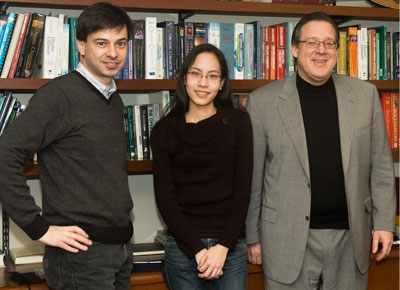(L to R) David Jeruzalmi, Danaya Pakotiprapha, and Gregory L. Verdine
Genomic DNA is under a constant attack by various damaging agents. Left uncorrected, such damage can lead to mutations that are deleterious to cells. To safeguard against damage to their genomes, cells have evolved several DNA repair pathways. Among these, nucleotide excision repair (NER) is unique in its ability to recognize and repair a variety of structurally unrelated DNA lesions, and it is the primary DNA repair pathway available for removal of bulky adducts. NER is conserved throughout evolution and involves three major steps: damage recognition (Figure 1A), incision, and repair synthesis.
In bacterial nucleotide excision repair, detection of damaged DNA is performed by the UvrA•UvrB damage sensor. Once a lesion is found, UvrA ‘loads’ UvrB onto the site of damage and exits the site. A series of downstream processing reactions ensue that restore the original DNA sequence. A large body of work has described the protein components of NER and their functions. What has remained elusive is an understanding of how these proteins cooperate to recognize DNA lesions.
Important progress on understanding the structure of the DNA damage sensor in NER was recently reported in the May 8th issue of the Journal of Biological Chemistry by Harvard post-doctoral associate Danaya Pakotiprapha (Molecular and Cellular Biology (MCB) Department) and Yi Liu’10, working with Professors David Jeruzalmi (MCB) and Gregory Verdine (CCB) at Harvard. This research team determined the crystal structure of a protein complex that reports on the native ensemble formed between the UvrA and UvrB proteins (Figure 1B). The group then leveraged this structure into a model of the complete UvrA•UvrB damage sensor. The resulting model provided two limiting views into the steps that UvrA and UvrB employ when damage DNA is recognized. This analysis provides a framework for future experiments aimed at a deeper understanding of how NER can repair a wide range of structurally unrelated DNA lesions.
Read more in Journal of Biological Chemistry
A) Diagram of the early steps in bacterial nucleotide excision repair. B) Model of the complete UvrA•UvrB damage sensor.


